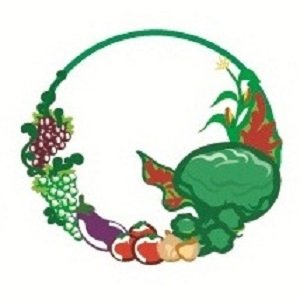
Community Supported Agriculture
What is a CSA Member?
CSA stands for Community Supported Agriculture, and while CSAs have been around for a while (see below), Featherstone offers a fresh take on what CSA means for us and our members, while staying rooted in the partnership between farmer and community. Investing in the farm and believing in what we are doing both during the A+ season and the C+ season is what sets our CSA members apart from our everyday wholesale customers in local markets. Our CSA Program and members are the backbone of the farm, keeping us afloat during challenging growing seasons, and reaping the reward during bountiful ones. We can't say enough how much we appreciate your commitment to our farm.
To learn more about Featherstone’s history, see Our Story or read Jack’s Blog post
Community Supported Agriculture: A Short History
The Community Supported Agriculture (CSA) model has its roots in various agricultural traditions. The CSA model itself originated in Japan in the 1960s under the name teikei, which translates to “partnership” or “cooperation.” The concept was based on creating a direct relationship between consumers and farmers, where consumers would pre-purchase a share of the harvest, providing farmers with upfront capital for their operations.
In Europe, Rudolf Steiner, an Austrian philosopher and social reformer, introduced biodynamic agriculture in the early 20th century, emphasizing a holistic, ecological, and ethical approach to farming. He promoted a view of the farm as a self-sustaining ecosystem that operates in harmony with the cycles of nature.
Steiner’s “biodynamic principles” inspired a generation of farmers seeking sustainable and ethical agricultural practices, influencing not only the biodynamic farming movement but also the organic farming movement and, by extension, the CSA model.
The integration of Steiner’s ideas into CSA comes from the model’s emphasis on creating sustainable, ethical, and direct relationships between farmers and consumers. Many of the first CSA farms in the United States were deeply influenced by biodynamic practices. These farms aimed to provide their communities with food grown in a way that heals and nourishes the land and the people.
In the United States, Booker T. Whatley, a Black horticulturist and agricultural professor at Tuskegee University in Alabama, was an early advocate for small-scale, sustainable farming. As early as the 1960s, he was promoting the concept of direct marketing and the creation of a loyal customer base as a way for small Black farmers to overcome institutional barriers to success. Whatley eventually published these ideas in his 1987 handbook How to Make $100,000 Farming 25 Acres.
Two New England farms, Indian Line Farm in Massachusetts and Temple-Wilton Community Farm in New Hampshire, have widely been credited with starting the CSA movement in the United States, launching their CSAs in 1986. Robyn Van En, the founder of Indian Line Farm, worked with the E.F. Schumacher Society to promote the concept of CSAs with a wider audience.
The CSA movement took off from there, with an estimated 1,200 farms adopting this model by 2004. The most recent figures from the USDA estimate that some 7,244 CSAs were in operation in 2020. (The USDA says that it may be under-counting CSA farms, and some estimate that as many as 12,000 CSAs operate in the United States today.)
Growing in MN is not always easy
CSA: A Partnership Between Farmers and the People They Feed
Community Supported Agriculture is a way for farmers to have a direct relationship with the people they feed. At its best, both parties in the CSA partnership reap benefits. Here are some key elements of the CSA experience:
Membership and Subscription: Consumers typically purchase a “share” of the farm's produce for a season, paying upfront or in installments. This helps farmers with cash flow and planning.
Shared Risk and Reward: Both farmers and members share the risks (e.g., poor weather, pests) and rewards (e.g., more nutritious, tasty fresh food).
Local and Sustainable: CSAs emphasize local food production and often use sustainable or organic farming practices. Featherstone Farm is a certified organic farm. See all our certifications here, or read more about the Local Food Difference.
Community Engagement: Many CSAs involve members in farm activities, educational programs, and events, fostering a sense of community and shared responsibility. At Featherstone Farm, we supplement our farm boxes with regular newsletters that contain recipes, news from the farm, and other educational content. We also sponsor on-farm events and member-community events.
The CSA model has not only provided a sustainable way to support local agriculture, but also helped foster a deeper appreciation for where food comes from and the hard work involved in producing it.


